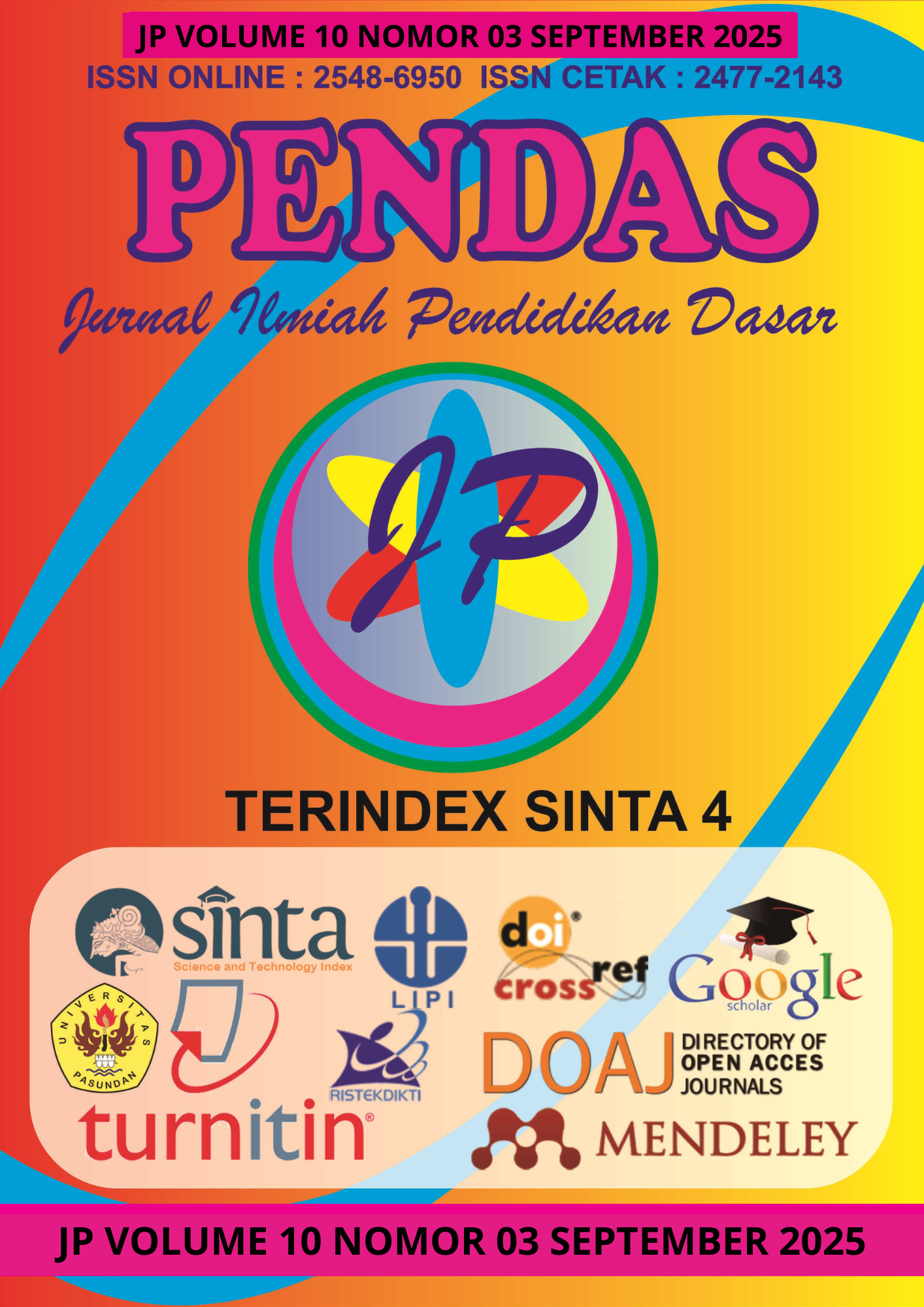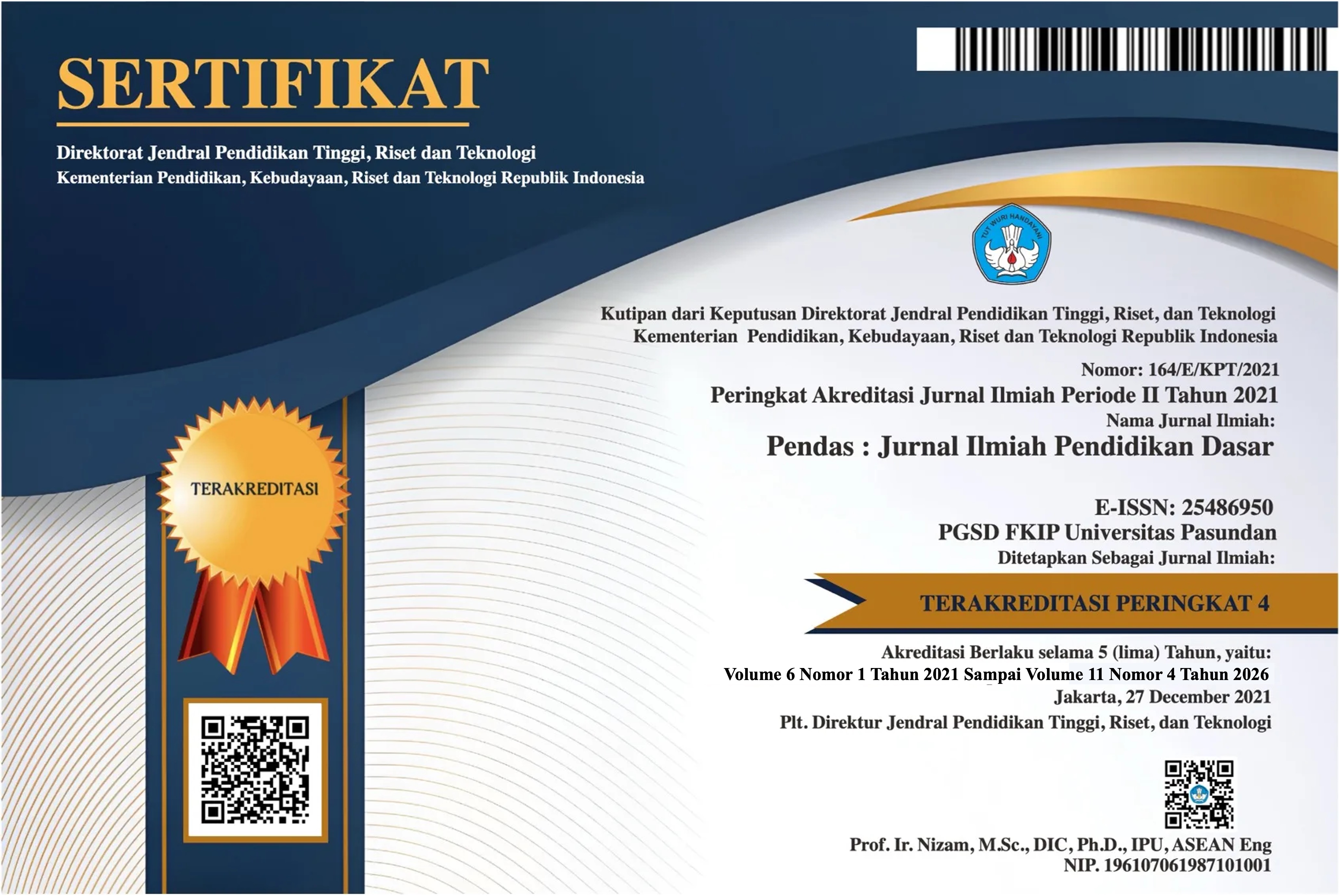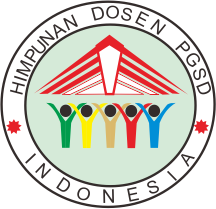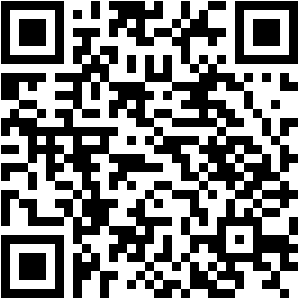ANALISIS PRINSIP SENI RUPA DALAM KARYA LUKIS MENGGUNAKAN TEKNIK FINGER PAINTING DI SEKOLAH DASAR
DOI:
https://doi.org/10.23969/jp.v10i03.30540Keywords:
art principles, finger painting, elementary schoolAbstract
This study aims to analyze the application of art principles in the painting works of fifth-grade students at SDN Cikuda using the finger painting technique, as well as to identify the supporting and inhibiting factors during the process. The research employed a qualitative approach with a case study method. Data were collected through observation, interviews, and documentation of students' artwork. The findings reveal that most students were able to apply the principles of unity, balance, and dominance quite well. This is evident in the harmonious visual composition, the prominent placement of main objects, and the visual balance among elements. However, the principles of rhythm, harmony, and proportion were not yet fully mastered. Supporting factors include students’ enthusiasm, engaging teaching methods, and active guidance from the teacher. Meanwhile, the main challenges encountered were limited materials, short instructional time, and the students’ developing understanding of visual structure. Overall, the finger painting technique proved to be an effective art learning medium at the elementary level as it provides a free, enjoyable, and educational form of expression. It is recommended that art learning be further optimized through varied visual approaches and consistent practice to enhance students’ artistic understanding and skills.
Downloads
References
Abdussamad, Z. (2021). Metode penelitian kualitatif / Metode kualitatif. Bandung: CV Syakir Media Press.
Fadli, M. R. (2021). Memahami Desain Metode Penelitian Kualitatif. 21(1).
Hardiyanti, W. D. (2020). Aplikasi Bermain Berdasarkan Kegiatan Seni Lukis untuk Stimulasi Kreativitas Anak Usia 5–6 Tahun. Jurnal Pendidikan Anak, 9(2), 134–139. https://doi.org/10.21831/jpa.v9i2.31664
Hasanah, U., & Erdansyah, F. (2020). Prinsip Seni Rupa dalam Menggambar Ornamen Melayu. Gorga: Jurnal Seni Rupa, 9(2), 444–450. https://doi.org/10.21831/jpa.v9i2.31664
Inayah, F. (2023). Analisis Prinsip Seni Rupa Pada Karya Gambar Siswa Kelas V Sekolah Dasar. Pendas: Jurnal Ilmiah Pendidikan Dasar, 8(1), 2287–2301. https://doi.org/10.23969/jp.v8i1.8045
Mahendra, J. P., & Rahayu, F. (2022). Meningkatkan kreativitas anak melalui kegiatan finger painting pada anak kelompok B PAUD Nurul Anshory Betumping tahun pelajaran 2020/2021. JUPE: Jurnal Pendidikan Mandala, 7(1). https://doi.org/10.58258/jupe.v7i1.3442
Miles, M. B., Huberman, A. M., & Saldaña, J. (2020). Qualitative data analysis: A methods sourcebook (4th ed.). SAGE Publications.
Ni’mah, Z., & Rachmawati, D. (2021). Meningkatkan Kreativitas Anak Melalui Kegiatan Finger Painting Di Taman Kanak‑Kanak PAUD ABA I Rambipuji Jember. Tematik: Jurnal Pemikiran dan Penelitian Pendidikan Anak Usia Dini, 7(2), 92–102. https://doi.org/10.26858/tematik.v7i2.27546
Octaviani, S., Chandra, A., & Pusari, R. W. (2021). Analisis Perkembangan Motorik Halus Melalui Kegiatan Finger Painting Pada Anak Kelompok B Usia 5–6 Tahun.
Hayati, S. (2023). Meningkatkan Kreativitas Peserta Didik Dalam Melukis Melalui Teknik Finger Painting Pada Pelajaran Seni Rupa di SD. Didaktik: Jurnal Ilmiah PGSD STKIP Subang, 9(4), 1395–1403. https://doi.org/10.36989/didaktik.v9i04.1708
Sugiyono, S. (2024). Metode penelitian kuantitatif (4th ed.). Bandung: Alfabeta.
Downloads
Published
Issue
Section
License
Copyright (c) 2025 Pendas : Jurnal Ilmiah Pendidikan Dasar

This work is licensed under a Creative Commons Attribution 4.0 International License.



















